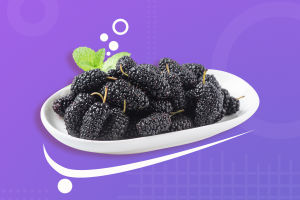Lollipops are a favorite with both kids and adults; whether you prefer a classic crystal stick or a mouth-puckering sour charm pop, lollipops are a fun and tasty treat that keep little hands from getting too sticky.
Do you know the weight of the largest lollipop ever created? Or how about the secret behind the Dum Dum Pop’s mystery flavor? Here are some fabulous facts about the classic candy.
Ancient Egyptians, Chinese, and Arabs coated fruits and nuts with honey to make them taste better and preserve them for longer periods. They consumed final products poking a stick through them to make them easier to eat. Those products resembled modern-day Lollipops.
In the 17th century, sugar became an abundant commodity. English people boiled sugar and turned it into hard candy. With the popularity of sugar candies, the number of street vendors also increased. Some of them start selling sugar candies with a stick so the customers can consume them without making their hands sticky.
In the modern world, the name “lollypop” first appeared in Charles Dicken’s novels in the 19th century as a new treat; However, during that period lollipops were no more than sweet lozenges without a stick.
Lollypop means “tongue slap” because “Lolly” meant tongue and the word “pop” means slap in old English.
The first high-production machine was invented in 1908. A manufacturer in a Racine, Wisconsin was asked to build something that could make a lot of lollipops in a short time. They came up with one that could push out 40 in a single minute.
The Dum Dum Pop’s mystery flavor isn’t such a mystery. It is created when a batch of one flavor is running out and they begin a new one in the same vat, so you never know which two flavors will be combined!
George Smith was the first to really run with the idea. He saw a West Haven, Connecticut sweets maker put a caramel and chocolate confection on a stick and an idea came to him. He began to manufacture a hard candy version and named it the Lolly Pop.
It's easier than ever to sneak a lollipop into class. A team of designers created a pencil/candy hybrid. Instead of a boring, flavorless eraser the writing tool is topped with a delicious twist of candy.
Lollipops are highly used candies in banks, shops, other locations. Businesses give lollipops as courtesy items to bind with their customers. Next time when you come to a bank or other office, pay attention to their candy jars. I am confident that you will find lollipops among the bunch.
In 2012, the world’s largest lollipop was created in California. A candy manufacturer made a chocolate-flavored lollipop that stood over 5 feet tall and weighed more than seven thousand pounds!
Not all lollipops are for enjoyment. There are medical lollipops that are given to children without fuss. Some medical lollipops are strictly designed for adults. For instance, some adults take Actiq lollipops as an analgesic substance (when prescribed).
The primary ingredients of lollipops are sugar and water. Then, candy makers add artificial and natural ingredients to create various flavors. For example, European countries such as Germany and Netherlands add salty licorice (salmiak) to lollipops.


